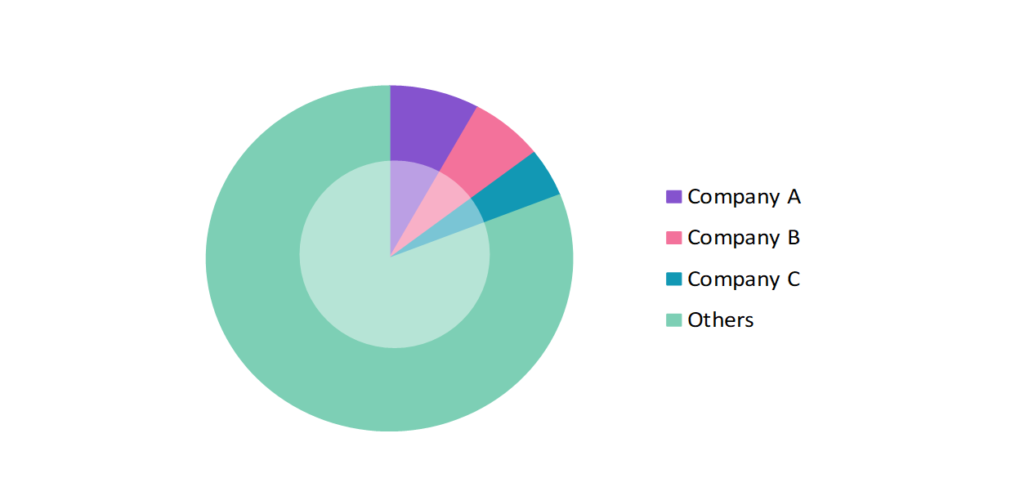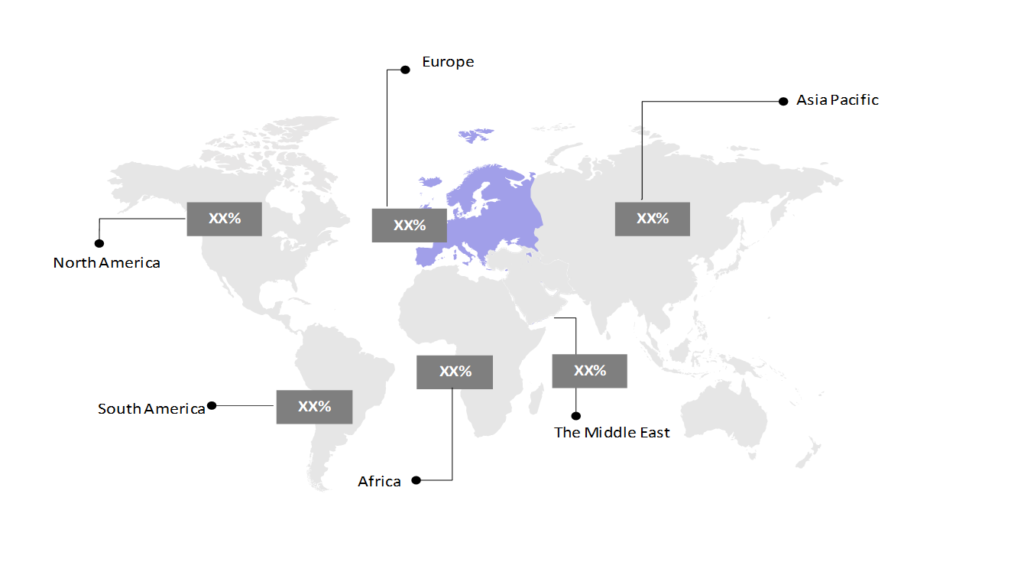Biosurfactants Market: Size, Share, Trends & Forecast (2024-2029)
The market report offers a detailed analysis segmented by Type (Glycolipids, Lipopeptides); by Application (Detergents, Personal Care, Food Processing, Others); by Geography (North America, South America, Asia Pacific, Europe, The Middle East, Africa).
Outlook

- The biosurfactants market is estimated to be at USD 2,357.81 Mn in 2025 and is anticipated to reach USD 3,157.77 Mn in 2030.
- The biosurfactants market is registering a CAGR of 6.02% during the forecast period 2025-2030.
- The global biosurfactants market is driven by increasing consumer demand for eco-friendly, biodegradable alternatives to synthetic surfactants, particularly in industries such as personal care, cleaning, and agriculture. Stricter environmental regulations, like the EU’s REACH policy, are pushing industries to adopt biosurfactants to reduce pollution and meet sustainability goals.
Request a free sample.
Ecosystem

- The participants in the global biosurfactants industry are always developing their strategies to preserve a competitive advantage.
- Companies are increasingly investing in research and development to improve biosurfactant production efficiency, reduce costs, and develop novel formulations, making innovation a critical competitive factor.
- Several important entities in the biosurfactants market include Evonik Industries AG; Biotensidon GmbH; Saraya Co., Ltd.; Allied Carbon Solutions Co., Ltd.; Jeneil Biotech, Inc.; and others.
Ask for customization.
Findings
| Attributes | Values |
|---|---|
| Historical Period | 2019-2023 |
| Base Year | 2024 |
| Forecast Period | 2025-2030 |
| Market Size (2025) | USD 2,357.81 Mn |
| Market Size (2030) | USD 3,157.77 Mn |
| Growth Rate | 6.02% CAGR from 2025 to 2030 |
| Key Segments | Type (Glycolipids, Lipopeptides); Application (Detergents, Personal Care, Food Processing, Others); Geography (North America, South America, Asia Pacific, Europe, The Middle East, Africa) |
| Key Vendors | Evonik Industries AG; Biotensidon GmbH; Saraya Co., Ltd.; Allied Carbon Solutions Co., Ltd.; Jeneil Biotech, Inc. |
| Key Countries | The US; Canada; Mexico; Brazil; Argentina; China; India; The UK; Germany; Turkey; UAE; Saudi Arabia; Egypt; South Africa |
| Largest Market | Europe |
Get a free quote.
Trends
- Microbial Fermentation for Biosurfactant Production: Advanced microbial fermentation techniques are being used to produce biosurfactants from renewable feedstocks like agricultural waste. This reduces reliance on petrochemicals and lowers production costs. Companies are developing strains of bacteria and yeast that can efficiently convert organic waste into biosurfactants, which promotes eco-friendly and cost-effective production.
- Enzymatic Biosurfactant Synthesis: Enzymatic processes are being explored to create more efficient and selective biosurfactant production methods. By utilizing enzymes to catalyze specific reactions, manufacturers can achieve purer biosurfactants with fewer by-products. This innovation is particularly useful for industries like pharmaceuticals and cosmetics, where product purity is essential.
- Tailored Biosurfactant Formulations: Customized biosurfactant formulations are being developed for specific applications, such as enhanced oil recovery, environmental bioremediation, and agriculture. In oil recovery, biosurfactants are being designed to increase oil displacement efficiency, while in agriculture, they are being used as eco-friendly soil conditioners and biopesticides.
Speak to analyst.
Catalysts
- Increasing Demand for Green Solutions: The global consumer shift towards eco-friendly products is driving the demand for biosurfactants in various industries. With heightened awareness around sustainability and environmental protection, both consumers and manufacturers are seeking alternatives to synthetic chemicals. Biosurfactants, being biodegradable and derived from renewable sources like plants and microbes, are gaining traction as green solutions for cleaning, agriculture, and personal care products.
- Regulations on the Use of Synthetic Surfactants: Stricter environmental regulations, such as the EU’s REACH policy, are pressuring industries to replace synthetic surfactants with eco-friendly alternatives like biosurfactants. These petrochemical-derived surfactants are flagged for their environmental hazards, including toxicity to aquatic life and poor biodegradability. The Ecover company has responded by incorporating biosurfactants into their products to comply with these regulations. This regulatory shift is accelerating the global adoption of biosurfactants across various industries.
- Personal Care Product Manufacturing Going Green: The personal care industry, including cosmetics and hygiene products, is seeing a strong move towards natural and organic formulations. Consumers are increasingly scrutinizing ingredient lists, avoiding synthetic chemicals, and choosing products with environmentally friendly ingredients. Biosurfactants, being natural, non-toxic, and skin-friendly, are becoming a preferred option in the formulation of shampoos, soaps, facial cleansers, and other personal care products. As manufacturers innovate to meet consumer demand for “clean beauty” products, biosurfactants are being integrated into formulations, fueling market expansion.
Inquire before buying.
Restraints
- Lack of Production Technology and Cost Competitiveness of Rhamnolipids: Despite the promising properties of rhamnolipids, one of the key types of biosurfactants, their production faces significant technological challenges. Current methods for large-scale production are inefficient and expensive, limiting their cost competitiveness compared to conventional synthetic surfactants. The complexity of the fermentation process and the need for specialized equipment contribute to the high cost of producing rhamnolipids, hindering their broader adoption.
- Limited Commercialization Due to High Production Costs: High production costs remain a major barrier to the commercialization of biosurfactants. The cost of raw materials, complex production processes, and scaling limitations make biosurfactants more expensive than traditional surfactants. This cost disparity makes it challenging for biosurfactant manufacturers to compete in price-sensitive markets, delaying their widespread use across industries.
- Conventional Biobased Products Gaining Popularity: While biosurfactants offer environmental benefits, conventional biobased products, such as plant-based surfactants and other naturally derived alternatives, are also gaining popularity. These biobased products often have lower production costs and are easier to manufacture at scale, making them more appealing to industries seeking green alternatives without the premium price tag associated with biosurfactants. As a result, the growing popularity of these products poses additional competition for biosurfactant adoption.
Personalize this research.
Hotspot

Explore purchase options.
Table of Contents
| 1. Introduction 1.1. Research Methodology 1.2. Scope of the Study 2. Market Overview / Executive Summary 2.1. Global Biosurfactants Market (2019 – 2023) 2.2. Global Biosurfactants Market (2024 – 2030) 3. Market Segmentation 3.1. Global Biosurfactants Market by Type 3.1.1. Glycolipids 3.1.2. Lipopeptides 3.2. Global Biosurfactants Market by Application 3.2.1. Detergents 3.2.2. Personal Care 3.2.3. Food Processing 3.2.4. Others 4. Regional Segmentation 4.1. North America 4.1.1. The US 4.1.2. Canada 4.1.3. Mexico 4.2. South America 4.2.1. Brazil 4.2.2. Argentina 4.2.3. Rest of South America 4.3. Asia Pacific 4.3.1. China 4.3.2. India 4.3.3. Rest of Asia Pacific 4.4. Europe 4.4.1. The UK 4.4.2. Germany 4.4.3. Rest of Europe 4.5. The Middle East 4.5.1. Turkey 4.5.2. UAE 4.5.3. Rest of the Middle East 4.6. Africa 4.6.1. Egypt 4.6.2. South Africa 4.6.3. Rest of Africa 5. Value Chain Analysis of the Global Biosurfactants Market 6. Porter Five Forces Analysis 6.1. Threats of New Entrants 6.2. Threats of Substitutes 6.3. Bargaining Power of Buyers 6.4. Bargaining Power of Suppliers 6.5. Competition in the Industry 7. Trends, Drivers and Challenges Analysis 7.1. Market Trends 7.1.1. Market Trend 1 7.1.2. Market Trend 2 7.1.3. Market Trend 3 7.2. Market Drivers 7.2.1. Market Driver 1 7.2.2. Market Driver 2 7.2.3. Market Driver 3 7.3. Market Challenges 7.3.1. Market Challenge 1 7.3.2. Market Challenge 2 7.3.3. Market Challenge 3 8. Opportunities Analysis 8.1. Market Opportunity 1 8.2. Market Opportunity 2 8.3. Market Opportunity 3 9. Competitive Landscape 9.1. Evonik Industries AG 9.2. Biotensidon GmbH 9.3. Saraya Co., Ltd. 9.4. Allied Carbon Solutions Co., Ltd. 9.5. Jeneil Biotech, Inc. 9.6. Company 6 9.7. Company 7 9.8. Company 8 9.9. Company 9 9.10. Company 10 |
Know the research methodology.
Biosurfactants Market – FAQs
1. What is the current size of the biosurfactants market?
Ans. In 2025, the biosurfactants market size is USD 2,357.81 Mn.
2. Who are the major vendors in the biosurfactants market?
Ans. The major vendors in the biosurfactants market are Evonik Industries AG; Biotensidon GmbH; Saraya Co., Ltd.; Allied Carbon Solutions Co., Ltd.; Jeneil Biotech, Inc.
3. Which segments are covered under the biosurfactants market segments analysis?
Ans. The biosurfactants market report offers in-depth insights into Type, Application, and Geography.
